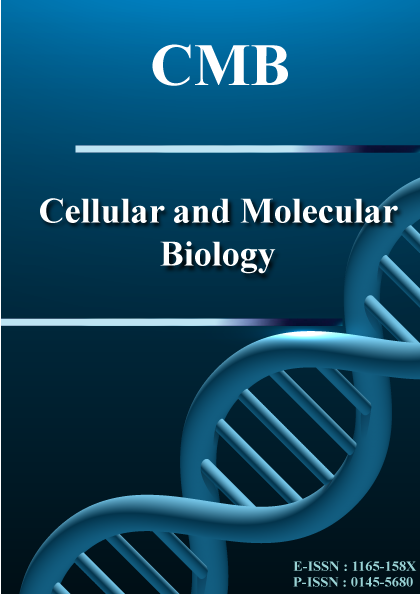Issue
Copyright (c) 2025 Yingbang Li, Yanfang Yang, Caihui Xian, Guowu Liang, Hui Zhong, Yunpeng Bai, Wendong Huang

This work is licensed under a Creative Commons Attribution-NonCommercial-NoDerivatives 4.0 International License.
The undersigned hereby assign all rights, included but not limited to copyright, for this manuscript to CMB Association upon its submission for consideration to publication on Cellular and Molecular Biology. The rights assigned include, but are not limited to, the sole and exclusive rights to license, sell, subsequently assign, derive, distribute, display and reproduce this manuscript, in whole or in part, in any format, electronic or otherwise, including those in existence at the time this agreement was signed. The authors hereby warrant that they have not granted or assigned, and shall not grant or assign, the aforementioned rights to any other person, firm, organization, or other entity. All rights are automatically restored to authors if this manuscript is not accepted for publication.Investigating the alleviation of endothelial injury by apelin: insights from network pharmacology and in vitro experiments
Corresponding Author(s) : Wendong Huang
Cellular and Molecular Biology,
Vol. 71 No. 2: Issue 2
Abstract
Vascular lesion is the most important complication of diabetes, and vascular endothelial injury is the basis of vascular lesions. Although apelin was considered to have a positive effect on cardiovascular, the potential mechanisms remain unclear. In this work, we aimed to determine whether apelin alleviates endothelial injury through Src/Stat3 pathway. In virtue of network pharmacology, Src/Stat3 was sifted of 44 overlapping targets of diabetes and apelin. Human umbilical vein endothelial cells (HUVECs) were treated with high glucose (HG) and oleic acid (OA) to simulate the physiological environment of endothelial injury in vitro. Cell viability and migration were promoted while apoptosis rate and lactic dehydrogenase (LDH) release were reduced in the presence of apelin. Not only the protein expression of phosphorylated Src and Stat but also eNOS were raised by apelin. In conclusion, apelin dramatically improved cell status by activating Src/Stat3 pathway and increasing expression of eNOS. Apelin may provide an opportunity for the development of cardiovascular drugs.
Keywords
Download Citation
Endnote/Zotero/Mendeley (RIS)BibTeX




